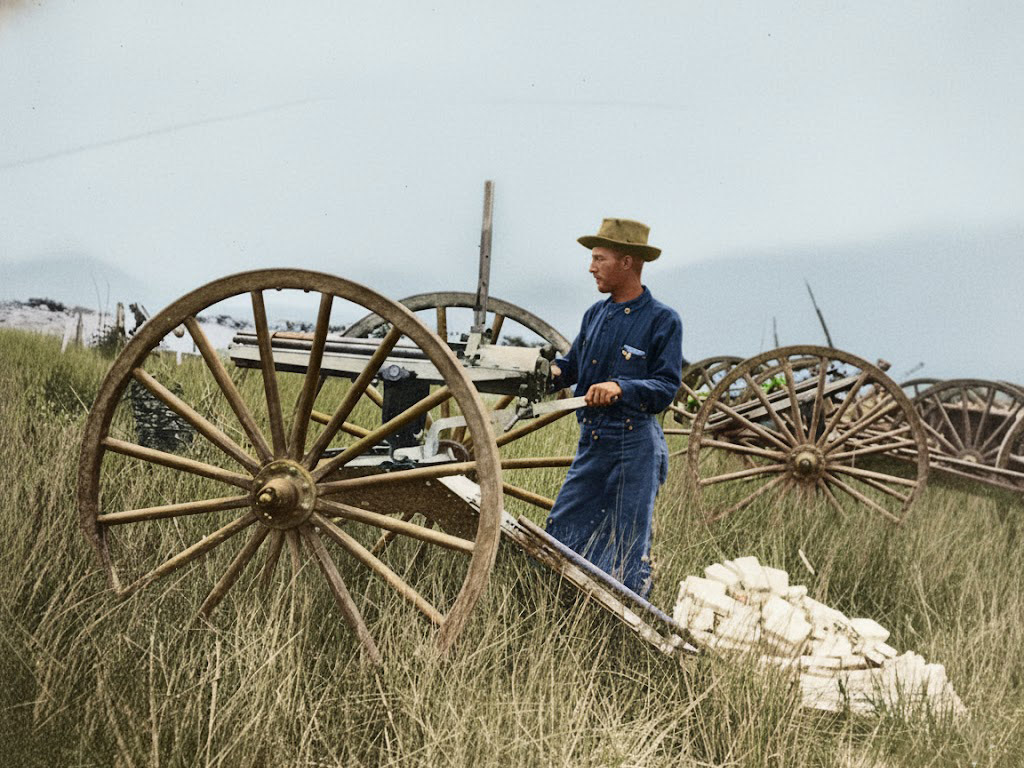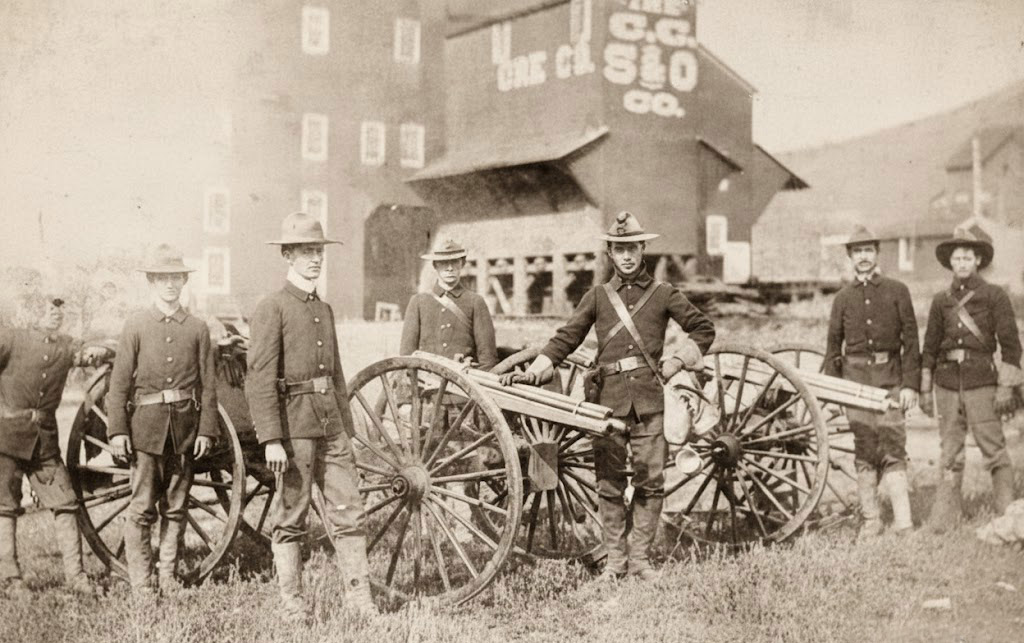It’s not difficult to realize the benefit of slinging more lead at the enemy. Whether it’s more lead than they’re shooting at you, or just more in general, a high rate of fire is necessary for inflicting more damage and keeping the enemy in check. Napoleon, Oda Nobunaga, and Gustavus Adolphus were just a few of the legendary military minds who advocated for more bullets faster. When the Industrial Revolution began to affect war and combat, it led to a slew of new developments on the battlefield. How weapons were loaded, how they fired, and, eventually, what they fired, were all transformed. The developments led to breechloading weapons, rifled barrels, and cartridges. It wouldn’t be long before someone figured out how to industrialize the entire rifle.
Gatling Gun Emerges from an Inventor’s Unusual Motivations
That was Richard Jordan Gatling‘s creation: A miracle weapon cranked by a lone gunner, mowing down ranks and changing the battlefield overnight. It makes for absolute cinema, but the real birth of the Gatling gun was stranger and slower, less a thunderclap and more a stubborn drumbeat of engineering in aftermath of the American Civil War.
Gatling was an inventor before he was a “gun man.” He designed screw propellers and improved seed planters; he earned a medical degree but never practiced as a physician. Watching the Civil War unfold, he claimed to be haunted by the fact that disease killed more soldiers than bullets. In his mind, a reliable, rapid-fire weapon would shorten wars by reducing the number of soldiers needed to fight them. Whether that hope was idealistic marketing or sincere humanitarian logic is anyone’s guess, but it shaped the myth. The Gatling gun’s origin story is tied to an inventor who insisted he was trying to save lives by building a machine that could take many at once.

The machine itself was a mechanical marvel that refused to wait for chemistry to catch up. Early volley guns like the Requa and European Mitrailleuses predated or paralleled the Gatling. What it did first was not “automatic fire” but sustained, controlled rapid fire, in a form that military institutions could adopt incrementally.
Why the Gatling Gun Became a Mechanical Breakthrough
The Gatling was simply a different species: externally powered, beautifully clockwork. Unlike the automatic weapons of the future that would use the blast of each shot to cycle the next round, Gatling’s design was powered by human muscle.
A cluster of barrels revolved around a central axis as the gunner turned a hand crank. Every quarter-turn married a fresh cartridge to a fresh barrel, fired it, and then offered the hot metal a chance to breathe and cool while the next barrels took their turn. That rotating logic beat fouling, and redistributed heat. A trained crew could pour out a sustained stream of fire at a time when armies were still using black powder and hand-loaded muskets.

Since it was introduced in 1862, some believe the Union Army snapped it up and steamrolled the Confederacy. The reality was much slower. Military bureaucracies are allergic to surprises, and early tests ran into the limits of ammunition, lubrication, and logistics. The first production models appeared in 1862 and 1863, just as the Union was still wrestling with procurement bottlenecks and battlefield doctrine that imagined cannons and infantry, not a mechanical beehive of bullets.
Some officers did buy Gatlings with private funds. A few even hauled them to the front and found, to their delight, that a properly fed gun could dominate a street or a trench approach in a way no volley could match. These scattered moments sparked the legend, but the war ended before the U.S. Army fully understood what the machine could do.
How Armies Slowly Adapted to the Gatling Gun
If the Civil War was the gun’s baptism, the decades after were its schooling. Smokeless powder, brass cartridges, and sturdier mounts turned the Gatling from a temperamental prodigy into a dependable professional. The Navy appreciated it for close-in defense against torpedo boats. Army detachments learned the joy and headache of moving a heavy, crank-driven thunderer over bad roads.

The psychological effect of Gatling’s gun was real: Soldiers had never heard such a seamless, mechanical roar. Battle reports from the late nineteenth century testify not just to casualties inflicted but to the way a Gatling pinned heads down and rearranged courage. No one had ever encountered weapons that allowed four men to fire 400 shots every minute, but slowly, the Russians, British, Spanish, and Filipinos began to understand what was changing.

Gatling’s gun has been accused of ending the age of bravery. Technology rarely abolishes courage; it just alters the forms that courage can take.Troops were as brave as ever in combat; the tactics simply changed. They learned to disperse, to dig, to coordinate with artillery, and maneuver. It helped usher in the modern battlefield, where movement and cover matter more than bright uniforms and linear ranks.
The Lasting Legacy of the Gatling Gun in Modern Warfare
The gun also exposed uncomfortable truths about empire and asymmetry. Rapid-fire weapons in colonial campaigns multiplied the power of small units, a fact celebrated in contemporary newspapers, haunting future historians.
The Gatling gun didn’t win the Civil War, didn’t end warfare, and wasn’t even the first true automatic. What it did was accelerate the journey from invention to doctrine. It nudged the forces and battlefield technology of the 19th century toward the grim, industrial arithmetic of the 20th. The first accurate automatic weapon, the Maxim gun, arrived in the 1880s and used recoil energy to run itself—no crank, no crew cadence, just chemistry driving steel. If there is a moral to the birth of the Gatling Gun, it’s that technology rarely arrives as a revolution. It arrives as a crank, a barrel, and a loud, long argument.
Read About Other Military Myths and Legends
If you enjoyed learning The Birth of the Gatling Gun, we invite you to read about other military myths and legends on our blog. You will also find military book reviews, veterans’ service reflections, famous military units and more on the TogetherWeServed.com blog. If you are a veteran, find your military buddies, view historic boot camp photos, build a printable military service plaque, and more on TogetherWeServed.com today.

0 Comments